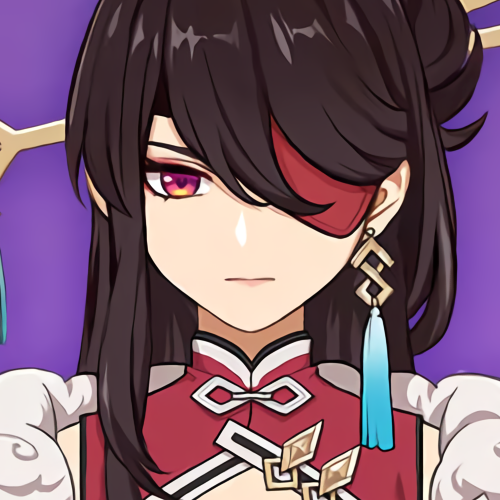Takeda Shingen deflects Uesugi Kenshin’s strike at the fourth Battle of Kawanakajima during the Sengoku period
The Sengoku Period (Sengoku Jidai, 1467-1568 CE), also known as the Warring States Period, was a turbulent and violent period of Japanese history when rival warlords or daimyo fought bitterly for control of Japan. The period falls within the Muromachi period (Muromachi Jidai, 1333-1573 CE) of Japanese medieval history when the Ashikaga shogun capital was located in the Muromachi area of Heiankyo (Kyoto). The beginning of the Sengoku period witnessed the Onin War (1467-1477 CE) which destroyed Heiankyo. The fighting that followed over the next century would eventually reduce the warlords to only a few hundred in number as the country was effectively carved up into princedoms. Eventually, one warlord rose above all his rivals: Oda Nobunaga, who set Japan on the road to unification from 1568 CE.
The Daimyo & Ashikaga Shogunate
The Ashikaga Shogunate (1338-1573 CE) held control of the central part of Japan, and the bureaucracy at the capital was relatively efficient, but the outer provinces were left semi-independent as local warlords or daimyo ruled their own lands how they saw fit. Local officials and estate managers such as the jito found it much more difficult to secure the taxes the state was due from landlords who now had no fear of any government reprisals. The daimyo (literally ‘Great Names’) were feudal lords who commanded personal armies of samurai or anyone else willing to take up arms and defend their lord’s estates and help expand it.
Some daimyo were aristocrats with a long heritage of land ownership, others were military governors (shugo) who went independent from the weakened shogunate, and there were also new lords who were the sons of tradesmen who had gathered together a small army to simply take by force the land of others. The phenomenon of new rulers overthrowing the established order and of branch families taking the estates of the traditional major clans became known as gekokujo or ‘those below overthrowing those above.’ The consequence of all the upheaval was that Japan became a patchwork of feudal estates centred around their individual castles and fortified mansions.
In the absence of a strong central government - a situation only worsened by the shogun Yoshimasa’s (r. 1449-1473 CE) decision to retreat to his Ginkakuji palace to contemplate the arts; the rule of law was very often replaced by the rule of force. The more powerful lords absorbed the lands of their weaker rivals and became known as sengoku daimyo. The warlords then passed on their position of strength to their male heir and so the position of daimyo became hereditary unless challenged by ambitious subordinate commanders. The wealth of the daimyo came from commerce, trade, and taxes imposed on those peasants who farmed on their estates. Daimyo may have been a law unto themselves but many of them did formulate law codes to better regulate the sometimes thousands of people under their command. These laws could cover anything from the prohibition of building castles and fortifications in their territory to measures that avoided wasting money on expensive theatre actors brought in from outside the daimyo’s domain.
The Onin War
The Warring States period kicked off with the Onin War (Onin No Ran, 1467-1477 CE). This civil war - its name derives from the year period - broke out because of the bitter rivalry between the Hosokawa and Yamana family groups. By the end of the decade, though, the fighting had sucked in most of the influential clans of Japan. The conflict revolved around each side backing a different candidate for the position of shogun - a particularly pointless debate since shoguns, like the emperors, no longer had any real power. Rather, the war is seen by historians as merely a result of the overly aggressive warlords of Japan being rather too keen to put their samurai to some use - good or bad. Even when the war ended in 1477 CE there was no victor and no resolution to the inherent militarism that fractured Japan for the next century as warlords fought each other with no one in particular ever achieving any dominance.
One anonymous poem, composed c. 1500 CE, captures the general mood of the times - that Japan was hurtling down a road that led only to destruction:
A bird with
One body but
Two beaks,
Pecking itself
To death.
(Henshall, 243)
The Onin War had sorted out who were the weak and the strong daimyo, who thus became much fewer in number (by 1600 CE there would be only about 250 of them in all of Japan). A consequence of this consolidation of resources was that field armies now numbered not hundreds but tens of thousands of warriors. The composition of such armies became more complex with specialised roles created such as the lightly armoured infantry, the ashigaru. There were cavalry units and men dedicated to procuring and transporting supplies and equipment. Battles had to be fought at greater distances from the daimyo’s castle and so lighter weapons became popular to facilitate troop movement. Halberds, pikes and, in the second half of the period, matchlock guns were adopted by some daimyo.
Treachery and ignoble acts were as common as in any other war, but there did develop a lot of mythmaking, especially involving the samurai warriors and the daimyo, eager to project a public image that glorified themselves and intimidated their enemies. The heavily armoured samurai, armed with sword and bow, were often presented in later literature set back in this period as disciplined, skilful, loyal, and honourable fighters, just as the medieval knight of Europe was presented in chivalric literature.
Castles
As a result of the constant threat of war and pillage in this period, castles were built with much greater frequency than previously in towns, at mountain passes, along vital roads, and on larger estates. The latter type, which could take the form of fortified mansions, was known as yashiki; Ichijodani (base of the Asakura family) and the moated Tsutsujigasaki (of the Takeda family) were excellent examples of this building trend. Some castles, such as Omi-Hachiman near Lake Biwa, caused an entire town to later spring up around them, the jokomachi. Not as yet the grand multi-storied stone structures of the 17th century CE, the castles of the period were, nevertheless, often sophisticated defensive structures despite the predominant use of wood. Constructed on large stone bases, the wooden superstructures included walls, towers, and gates, which had narrow windows for archers and from which hung boulders on ropes, ready to be dropped on any attackers.
Local Government
Villages grew in number and size as farmers sought security in numbers and worked together to produce more and benefit from communal projects such as digging irrigation channels and building waterwheels. In the absence of any authority from the central government, many villages governed themselves. Small councils or so were formed, which made decisions regarding laws and punishments, organised community festivals, and decided on regulations within the community. Some villages got together to form leagues or ikki for their mutual benefit, with some even challenging and winning battles against local daimyo, while others at least took advantage of their lord’s absence on campaign to better the lot of the peasantry. There were several major peasant revolts, too, notably in Yamashiro province between 1485 and 1493 CE.

Towns and cities became larger, with many having a population of over 30,000, thanks to a boom in international trade (daimyo wanted foreign luxury goods like Ming porcelain to demonstrate their status), weekly markets, and the development of trade guilds. Measures, weights, and currencies were standardised in many domains to facilitate trade. Meanwhile, the fortunes of the many Buddhist temples scattered across Japan plummeted as no longer backed by the state they could not so easily extract contributions from local communities. Worse was to come when the temples were directly attacked during the reign of the one warlord to establish dominance: Oda Nobunaga.
Oda Nobunaga
The Ashikaga Shogunate would be terminated by the warlord Oda Nobunaga (l. 1534-1582 CE) who finally brought some stability to central Japan. Oda Nobunaga had expanded his territory gradually through the 1550/60s CE from his base at Nagoya Castle as he defeated all comers thanks to his martial skills and innovative use of firearms. The Warring States period comes to an end with the seizure of Heiankyo by Nobunaga in 1568 CE. The warlord then exiled the last Ashikaga shogun, Ashikaga Yoshiaki, in 1573 CE. The unification of the country would continue under Nobunaga’s immediate successors, Toyotomi Hideyoshi (1537-1598 CE) and Tokugawa Ieyasu (1543-1616 CE). This next period of Japan’s history would be known as the Azuchi-Momoyama period (1568/73-1600 CE).
- 🐻Link to all Hexbear comms https://hexbear.net/post/1403966
- 📀 Come listen to music and Watch movies with your fellow Hexbears nerd, in Cy.tube](https://live.hexbear.net/c/movies
- 🔥 Read and talk about a current topics in the News Megathread https://hexbear.net/post/6697187
- ⚔ Come talk in the New Weekly PoC thread https://hexbear.net/post/6693847
- 🏳️⚧️ Talk with fellow Trans comrades in the New Weekly Trans thread https://hexbear.net/post/6764309
- 👊 New Weekly Improvement thread https://hexbear.net/post/6759650
- 🧡 Disabled comm megathread https://hexbear.net/post/6761973
- ☕ Parenting Chat https://hexbear.net/post/6760180
- 🐉 Anime & Manga discussion thread https://hexbear.net/post/6618110
reminders:
- 💚 You nerds can join specific comms to see posts about all sorts of topics
- 💙 Hexbear’s algorithm prioritizes comments over upbears
- 💜 Sorting by new you nerd
- 🐶 Join the unofficial Hexbear-adjacent Mastodon instance toots.matapacos.dog
Links To Resources (Aid and Theory):
Aid:
Theory:
spaghetto is a singular spaghetti, still think italy is cool?

Left Bank Books Collective at Pike Place (leftist bookstore worker co-op) has Gulag Archipelago prominently displayed in the small USSR section, also I didn’t see anything by Marx, Engels, Lenin, Mao, etc. there was an anarchism section and plenty of Foucault though.
💀
Almost got hit by a car today and now I’m PISSED off. I kinda wish it hit me so I could have gotten tomorrow off lmao
It’s kind of wild how nobody ever goes away once they get into a certain social class.
Like you can have people who get caught scamming, who have hit TV shows or movies about how much of a scam artist they are and they just keep going.
But you steal too much from target and the police get you? Your life is fucking ruined.Like why the fuck are we still hearing bullshit from Sam Bankman Fried? Jordan Belfort wrote a book about how much of a prick he is, had a movie about his crimes, and was sentenced to not trade stocks, and he’s still running scams.
btw, some kind soul seemingly fixed slow emoji loading time, so thank to our brave developers fighting spaghetti code

Leading vibesconomic indicators show coming vibeslatility, here’s how billionaires can still profit
I thought about the rationalist again for no particular reason and I am mad again.
i’ve been listening to podcast recently about them and got confused again
It is a confusing bunch. It is the dumbest medium support needs autists from silicon Valley trying to form community and being unable to do so creating multiple right wing deathcults via maoist Harry Potter fan fiction and some of the infinite money they access to for a minute.
Which, like, you can see why I was immediately charmed by their vibe but then repulsed by their words and deeds. Like, I had so much hope for them. I got kicked out of one of their groups for insisting comunism was the most rational form of government
tbh i find their utilitarianism insufferable so i immediately dismissed them as anti-humanists, so i learn everything against my will, and this everything is just pieces of some lore
I like utilitarianism. They are jsut really bad at it. They are transhumanist in a way that makes me think they don’t understand any of it.
i feel like it’s very easy ideology to twist into mass suffering, and long termism makes it completely terminal
If you are creating mass suffering than it isn’t utilitarian. It really isn’t that complicated. The expected negative utility of knowing you could be disassembled for spare parts negates the utility of some people getting spare parts.
It is just as easy as any other ideology. If you don’t care what the ideology is you can just do whatever you want anyway. It is popular with the worst people, but in that it is no diffrent from like lord of the rings.
how much do you value the knowing? what if it’s by ethnicity and you definitely know you won’t be touched?
say you can extend lifespan by organ transplant by 70 years (expected lifetime wherever), and you choose only latino people for it, utilitarianly this plan is neutral from whole humanity perspective, and vastly negative from latino perspective, positive from white perspective.
and that’s without introduction of money value of life, which rationalists do, where americans produce 3 million over lifetime while congolese child - not so much.
We had a sudden 15 minute meeting planned today at work and at first I was thinking: “Ok sure, the boss probably just wants to know what days we plan to work on a holiday week without each of us emailing them individually.”
But NOPE, turns out it was a safety meeting for what to do if ICE wants to come inside. Funny enough, employees got their own meeting since they get a special number to call. Us brokie lil contractors have to contact the boss, and then I assume he calls the number for us lmao. Very efficient while men with guns corner us. I mean ideally we would just drive past the building if we see a bunch of unmarked vans at the entrance and go to a nearby parking lot, then ask for help, but uuuuuuh it’s entirely possible ICE could hide somewhere waiting for someone to arrive and then jump them while blocking the exit. But damn it, those wretched little contractors might think we actually employ them if they get direct access to A SAFETY PHONE NUMBER.
Sorry I’m just imagining a world where 911 is gatekept like this.

Spaghetti tacos are the peak idgaf food, by tacos I mean burrito because open tacos are terrible for packing a lunch
They are essentially just American yakisoba-pan.
I learned something new
Now you see me magic actually works like mage the awakening magic (they need to somehow convince humans their magic is just illusions)
Linus Torvalds is OK with vibe coding as long as it’s not used for anything that matters https://www.theregister.com/2025/11/18/linus_torvalds_vibe_coding/ says the git who copy pasted MINIX lol
I mean he’s probably right. Like if you’re just doing bullshit, making the bullshit machine do it for you is probably fine. AI has no viable means to exist as it does and required incredible crimes to exist, but it’s here for the moment and if you don’t mind garbage it can absolutely output some garbage.
Down with
 long live
long live 
Gonna get one of those “I bought this before Elon went crazy” bumper stickers to slap on my mid-2000s toyota.
Peak is fun except when bullshit happens and your the only one of the group to survive it
Computers keep getting faster, not powerful, etc. And yet everything shit the experience of using one has only gotten worse. Like 10, maybe even 20 years ago, literally everything about using a computer was better: talking to friends; getting the news, research, piracy, gaming, emailing, everything physical about the devices you were using.
I don’t want to ever hear the word “innovation” again
Hi @RedWizard@hexbear.net,here are some news site recomendations for abolishcapital, its a few, you could probably make a new comm or 2 if you think they make fill up too much the main comm (like a middle east/muslim world comm)
spoiler
LeftVoice its a trot news site, they make good article from time to time
Cosmonaut big tent marxist news site, pretty good
Socialist Tribute, the substack of the Marxist Unity causus of the dsa
PRWC is the news site for the Communist Pary of the phillipines, it has articles in english and Filipino
Bulatlat leftist phillipines news
Red Phoenix news its by the American Party of Labor (Hoxhaists), i like them, good usa articles (also make a few in spanish)
Scalawag black center leftist news mag in the south
RedSpark maoist news, mostly about the peoples wars in phillipines, india and the rest of the global south
Qiao Collective its a leftist media collective by diaspora Chinese they dont post a lot but its good
Sovereign Media is new, but the nerds i follow follow them so they are probably good, they post anti-imperialist articles
BlackagendaReport, its good sometimes its articles get posted in empoc comm, they are black leftists mag
Kawsachun News they are leftists from latin america
TheWire, not leftist but from what i have look they are a pretty decent generals news about india
Vox Ummah, anti-imperialist about the muslim world
Mintpressnews independent media org, pretty decent
The Palestine Chronicle, its a 25 year old paletinian newspaper.
Tricontinental, is global south news and articles
Belly of the Beast is a pro-cuba journalist org, they mostly just focus on cuba, its good
Pyongyang times, Juche Korea only english news paper, mostly recommending it because i think it would be funny to see the reaction from the lemmy libs
New Socialist, UK socialist mag
Protean Magazine, independent leftist mag
Oh damn what a treasure trove!












